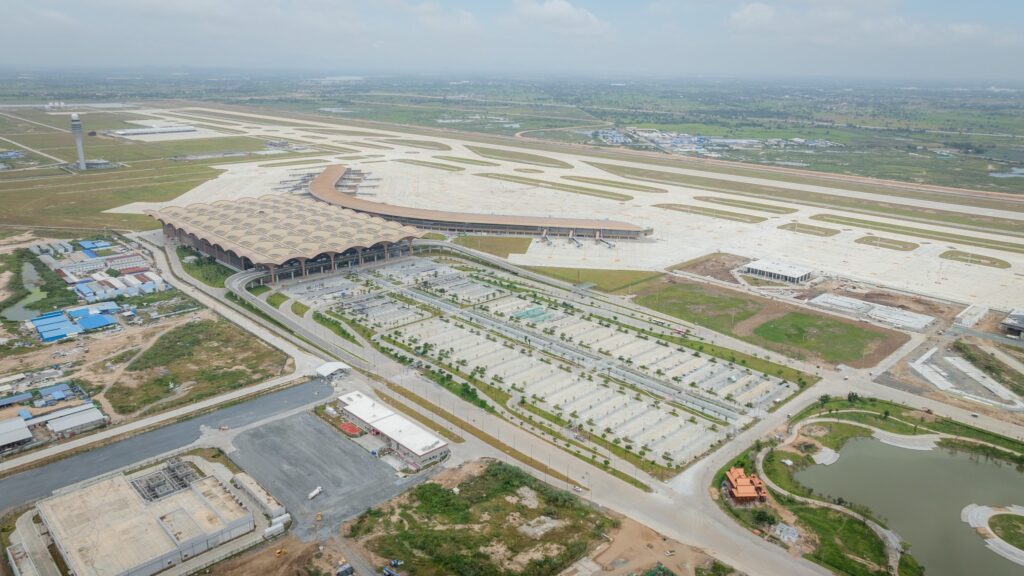Cambodia has officially taken flight—literally. The Techo International Airport, Cambodia’s newest and largest airport, has opened its doors in Kandal Province, just south of Phnom Penh. For the first time, travelers from around the world can experience a modern, world-class gateway into the country.

But this airport is more than just a travel hub. It’s a statement. A statement about Cambodia’s ambitions, the government’s forward-looking vision, and the leadership of Prime Minister Hun Manet, who has been actively pushing for infrastructure projects that will transform the country’s economy and tourism landscape.
From creating thousands of jobs to boosting trade and tourism, the opening of Techo International Airport marks a milestone that could shape Cambodia’s future for decades.
A Brief Look at the Project
The Techo International Airport is nothing short of ambitious. Designed to handle 12 million passengers per year in its first phase, the airport features modern terminals, expansive runways, and advanced cargo facilities. Its location in Kandal Province was chosen strategically to reduce congestion at Phnom Penh International Airport and to better serve the surrounding regions.
Construction began in 2019, and after several years of planning, investment, and careful execution, the airport finally opened in November 2025. The project was made possible through a mix of government funding and international investment, reflecting a clear vision to integrate Cambodia into the regional and global economy.
What It Means for the Economy
The economic potential of Techo International Airport is enormous. Jobs are one of the most immediate benefits. During construction, thousands of Cambodians were employed, and now the airport itself, along with surrounding hotels, shops, and transport services, continues to generate employment opportunities across multiple sectors.
But the impact goes beyond jobs. By improving cargo and passenger connectivity, local businesses now have faster access to international markets, making exports smoother and trade more efficient. Investors are taking note, and new business districts and economic corridors are expected to spring up near the airport—cementing its role as a catalyst for Cambodia’s broader economic growth.
A Boost for Tourism
Tourism has long been a cornerstone of Cambodia’s economy, and Techo International Airport is set to take it to the next level. The airport will make it easier for travelers from China, South Korea, and other ASEAN countries to reach Phnom Penh and surrounding areas, supporting both business and leisure travel.
Local businesses stand to benefit as well. From restaurants and hotels to small shops and cultural attractions, increased foot traffic will help communities grow. The government’s strategy is clear: diversify Cambodia’s tourism offerings, promote regional destinations, and reduce overreliance on traditional hotspots like Angkor Wat.
Challenges Ahead
No project of this scale comes without challenges. Environmentalists have raised concerns about potential impacts on local ecosystems and water resources. Financially, the $2 billion investment requires careful management to ensure the airport delivers sustainable returns.
There’s also regional competition. Thailand and Vietnam have airports that attract many of the same tourists and investors Cambodia wants. Success will depend on excellent services, safety, and efficient operations. And perhaps most importantly, the airport must serve the Cambodian people—not just international visitors—through accessible services and meaningful employment opportunities.
Looking Forward
The Techo International Airport is more than concrete and steel; it’s a symbol of Cambodia’s ambitions under Hun Manet’s leadership. By connecting the country more effectively to the world, creating jobs, and supporting tourism and trade, this project has the potential to become a cornerstone of Cambodia’s growth story.
While challenges remain, one thing is clear: Cambodia is ready to welcome the world, and the sky is no longer the limit.

